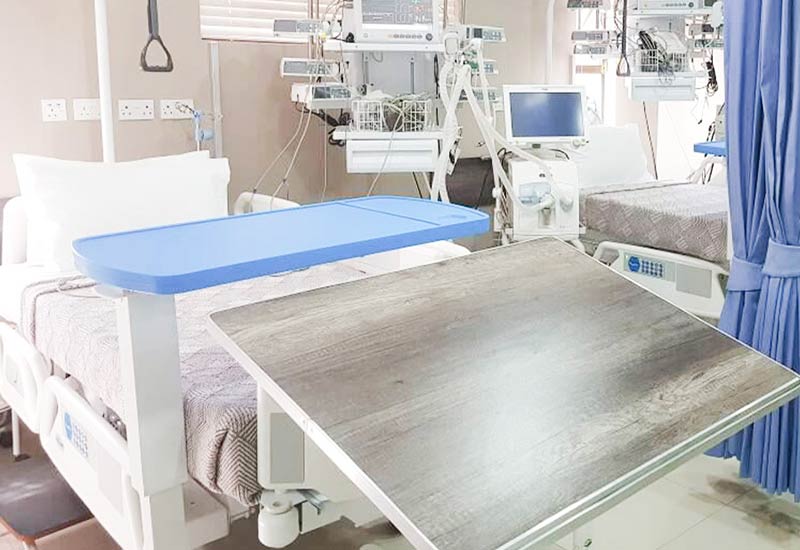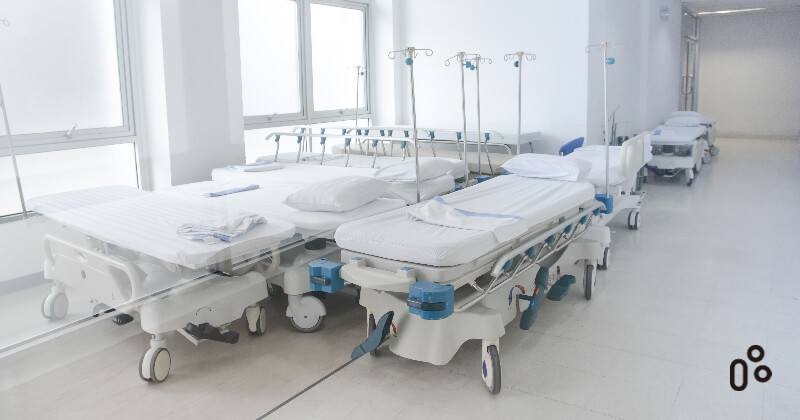Not known Details About Hospital Beds For Home Use
Wiki Article
The Buzz on Hospital Beds For Home Use
Table of ContentsEverything about Hospital Beds For Home UseGetting My Hospital Beds For Home Use To Work10 Simple Techniques For Hospital Beds For Home UseFascination About Hospital Beds For Home Use8 Easy Facts About Hospital Beds For Home Use ShownThe 5-Second Trick For Hospital Beds For Home UseWhat Does Hospital Beds For Home Use Do?
Next, we will certainly explore the characteristics, uses, and Pros and Disadvantages of each kind of hospital bed in deepness. A hands-on healthcare facility bed is the most fundamental type of healthcare facility bed, and all change functions are attained via a hand-cranked device.These hand-cranked devices are generally installed at the foot or side of the bed, and the caregiver or patient can adjust the elevation or tilt angle of the bed by drinking the handle. Since no electrical parts are required, are typically less expensive than electric healthcare facility beds, appropriate for medical institutions or households with limited spending plans.
How Hospital Beds For Home Use can Save You Time, Stress, and Money.
For patients who require to adjust their posture or height often, hands-on beds may not be hassle-free enough due to the fact that each modification needs manual procedure. If the bed requires to be changed regularly, nursing team may require to invest even more physical stamina to operate the hand-cranked device - hospital beds for home use. Guidebook beds are generally ideal for people in the recuperation period or celebrations with reduced nursing demandsGenerally, the change of the back and legs is controlled by electrical motors, while the overall height change still requires to be done by hand. The purpose of this design is to lower prices and power intake while maintaining high functional convenience. Compared to manual health center beds, semi-electric medical facility beds are extra hassle-free in adjusting the back and legs, particularly for people who require to readjust their stance frequently.
Considering that only some functions count on electrical energy, semi-electric hospital beds eat much less power throughout usage. Since the general height still needs to be adjusted by hand, it might not be as hassle-free as completely electric medical facility beds for clients who need to adjust the bed elevation frequently. Contrasted with manual health center beds, semi-electric medical facility beds are a little more complicated to run, requiring individuals to understand the combination of electric and hand-operated operations.
Electric healthcare facility beds have high change precision and can be exactly adapted to a particular angle and elevation according to the demands of clients to supply one of the most comfy support. All-electric medical facility beds are normally equipped with a variety of extra functions, such as built-in scales, bed mattress stress change, and so on, to fulfill the special needs of different individuals.
Everything about Hospital Beds For Home Use
A reduced bed is a particularly developed healthcare facility bed that can be adapted to a really low level, generally just a couple of inches from the ground. The function of this design is to reduce the threat of clients falling from the bed, especially for people that are at threat of dropping, such as the elderly or people with minimal wheelchair.
The Ultimate Guide To Hospital Beds For Home Use
provide a care setting ideal for children's height and physique, increasing the comfort and safety and security of youngsters. Some pediatric beds are also outfitted with brightly colored bed rails or animation designs to lower the fear of kids in the hospital environment. For kids that require to remain in bed for a read this post here lengthy time, pediatric beds are usually geared up with anti-bedsore bed mattress, flexible bed rails and various other features to give comprehensive care support.The shipment bed is likewise geared up with postpartum recuperation features, such as cushion adjustment, bed heating, etc, to help mothers recover faster. The intensive care bed (ICU Bed) is designed for the critical care unit (ICU) and has thorough surveillance and nursing features. This sort of bed is normally outfitted with user interfaces for a selection of surveillance tools, which can monitor the patient's important indications in actual time, such as heart rate, blood pressure, respiration, etc.
Getting The Hospital Beds For Home Use To Work
The intensive treatment bed has a completely electric adjustment feature, which can quickly readjust the angle and placement of the bed to meet the needs of various treatments and treatment. The layout of ICU bed thinks about the need of rescue procedure. The bed can be quickly gotten used to the most suitable rescue pose and work together with the usage of rescue equipment.It can effectively separate patients from the outdoors and decrease the threat of infection transmission. Isolation beds are normally equipped with special bed drapes or securing covers and connected to air filtration systems to maintain the air around the bed clean. Seclusion beds are particularly made to avoid the spread of virus from infectious individuals and shield the safety of various other people and medical personnel.
Seclusion beds are equipped with air purification systems that can filter microbes and particle issue in the air to maintain the air around the bed tidy. Can great site additionally be readjusted to different positions.
The Basic Principles Of Hospital Beds For Home Use
Larger and sturdier than a basic bed. Obese, excessive weight, individual sizeDesigned for clients in danger of dropping out of bed. Lower to the ground than a standard bed. Person falls, bed heightDesigned for children. Smaller sized in size than a typical bed. Pediatrics, child-sized equipmentUsed throughout childbirth. Equipped with functions such as braces and a headrest.

In a medical care setting, choosing the ideal bed can not only improve the effectiveness of treatment, but also dramatically improve client convenience and safety and security. By understanding the types and uses these beds, health care centers and family caregivers can better support and look after their patients.
Some Known Details About Hospital Beds For Home Use
HomeCare Healthcare Facility Beds, a division of DiaMedical U.S.A., is dedicated to offering complete openness for its consumers. Individuals can be bewildered by the different options in long-term treatment products, and HomeCare Medical facility Beds is committed to improving this process, while making certain consumers get the information and assistance they require.
Medicare Component B (Medical Insurance coverage) covers medical facility beds as durable clinical devices (DME) that your doctor prescribes for usage in your home. After you meet the Part B insurance deductible you pay 20% of the Medicare-approved quantity (if your provider approves task). Medicare pays for various type of DME in different means.

Report this wiki page